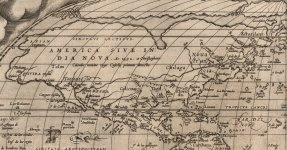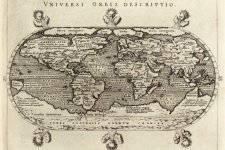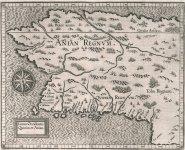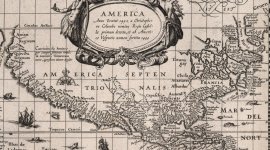Tartar Rex?
Came up on some fun info pertaining to the North American continent, and its possible relation to Tartary. Here is what we have. Francisco Vázquez de Coronado was a Spanish conquistador and explorer who led a large expedition from Mexico to present-day Kansas through parts of the southwestern United States between 1540 and 1542. In the 16th century, the Spaniards in New Spain (now Mexico) began to hear rumors of "Seven Cities of Gold" called "Cíbola" located across the desert, hundreds of miles to the north.Below you can see the official route of the Coronado's expedition. I think this route makes very little sense, keep on tracking, and I will explain why.
Francisco Vázquez de Coronado

1510-1554
1510-1554
As the story goes, Coronado was not your regular explorer. He was a conquistador, and was looking for gold. Actually he was looking for the Seven Cities of Gold which were also known as the Seven Cities of Cibola. The cities were Hawikuh, Halona, Matsaki, Quivira, Kiakima, Cibola, and Kwakina.
We have at least two sources mentioning these seven cities. There could be more, but
- Pedro de Castaneda, the historian of the expedition: “In the year 1530 Nuno de Guzman, who was president of New Spain, had in his possession an Indian, one of the natives of the Valley of Otixipar, who was called Tejo by the Spaniards. This Indian said he was the son of a trader who was dead, but that when he was a little boy his father had gone into the backcountry with fine feathers to trade for ornaments, and that when he came back he brought a large amount of gold and silver, of which there is a good deal in that country. He went with him once or twice and saw some very large villages, which he compared to Mexico and its environs. He had seen seven very large towns which had their streets of silver workers.”
- Reports given by the four shipwrecked survivors of the failed Narváez expedition, which included Álvar Núñez Cabeza de Vaca and a black moorish slave named Esteban Dorantes, or Estevanico. Eventually returning to New Spain, the adventurers said they had heard stories from natives about cities with great and limitless riches.
While among the towns, Coronado heard an additional rumor from a native he called "the Turk" that there was a city with plenty of gold called Quivira located on the other side of the great plains. However, when at last he reached this place (variously conjectured to be in modern Kansas, Nebraska or Missouri), he found little more than straw-thatched villages.
Official dogmatic version: The location of Quivira is believed by most authorities to be in central Kansas near present-day Lyons extending northeastern to Salina. The Quivirans were the forebears of the modern day Wichita Indians and Caddoan tribes, such as the Pawnee or Arikara.
Here is where I decided to look at some older maps, as well as do some googling of my own. As you noticed, the official scientists place this Quivira somewhere in central Kansas.
Some of the maps state "QUIVIRA REGNUM". As we all should know by now, Regnum from Latin is Kingdom. So essentially we end up with the Kingdom of Quivira. And there can be no Kingdom with no King. Additionally, the 1630 maps contained the following statement. I got no clue what it says, but one word definitely sticks out right?
Tartarians in North America in the 16th century?

NOTE: What I found in my continued research could be interesting for a few blog members, I assume. This Quivira Kingdom was ruled by a King whose name was Tartarrax. Now, I do not think it was his real name. My personal opinion, that the king was referred to as Tartar Rex. "Rex" means King in Latin. From this perspective, we have no idea what the King's name was.
There they had news of Axa and Quivira: where, it was said, “was a king, whose name was Tartarrax, with a long beard, hoary-headed, and rich; which was girded with a Bracamart; which prayed upon a pair of beads; which worshipped a cross of gold and image of a woman the queen of heaven.
Of course, considering that Coronado went to Kansas instead, they found jack nothing, instead of the Kingdom of Quivira and the Tartarian King. Please read the cut out below.
Whoever feels like it, can investigate the Anian Regnum (just above Quivira Regnum) as it relates to Marco Polo. By the way, the official science hates on Anian Regnum, and places it "somewhere" in China. So this Anian Regnum kingdom is also a mystery.
KD Summary: We had a Tartarian Kingdom in North America ruled by a Tartarian King. Too bad, the Continent has changed: Bizarre transformation of the North American Continent: 16th through 19th centuries, and nothing will ever be found.
I have serious doubts about this "Coronado expedition". It sounds legit, but Kansas... something is not right there... like the presence of Tartars in North America.
It seems, there is something we were not told...





